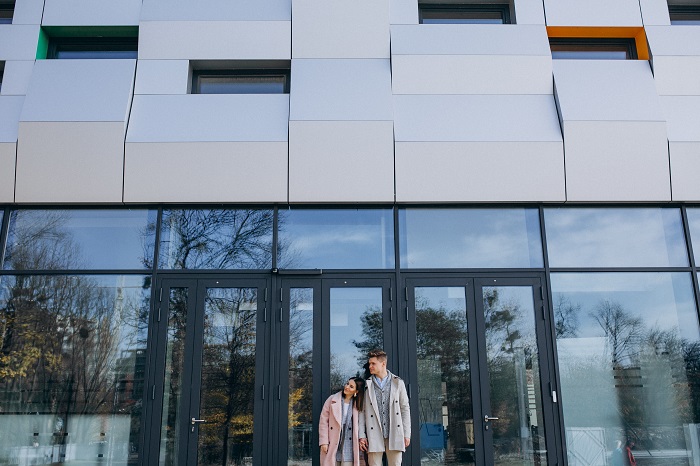Commercial buildings have particular issues in comfort, security, and efficiency. Security is crucial, energy prices are high, and street noise is intrusive. secondary glazing can solve these difficulties. Secondary glazing doubles the glazing of existing windows. This easy modification may boost business property security, energy efficiency, and noise reduction.
Understanding Secondary Glazing
Secondary glazing must be defined before discussing its benefits. Secondary glazing adds a pane of glass to the existing window, unlike double glazing, which replaces the complete window unit. This additional pane is usually mounted on a separate frame to insulate the window from the new glass. A building’s performance may be greatly improved without extensive improvements using this system.
Improving Energy Efficiency
Thermal Insulation
Secondary glazing’s thermal insulation boosts energy efficiency, a major benefit. Heat transmission is reduced by the secondary glazing and air gap between the original window and secondary glazing. This keeps warm air in winter and hot air out in summer.
This saves business establishments a lot of energy. Lower energy expenses result from less labor for heating and cooling systems to maintain a pleasant home temperature. Improved insulation lowers the building’s carbon impact, making it more sustainable.
Cost-effectiveness and Energy Savings
Secondary glazing saves energy by decreasing artificial heating and cooling. These savings can be significant for commercial facilities with wide windows and long hours. Energy usage reduction decreases operational expenses and creates a greener, more sustainable company model. Secondary glazing can reduce energy expenditures and pay for itself, especially in harsh temperature locations.
Energy Regulation Compliance
Many regions require commercial buildings to be energy efficient. Secondary glazing improves energy efficiency and helps businesses meet these criteria. Older structures that don’t fulfill criteria may benefit from this. Installing secondary glazing is a simple and affordable solution to improve compliance and avoid fines.
Reducing Noise Pollution
Audio insulation
Noise reduction is another benefit of secondary glazing. Commercial premises in bustling metropolitan locations or near major roadways can be noisy. Excessive noise may disrupt work, lower productivity, and make consumers uncomfortable.
Sound is blocked by the air gap between the original window and the supplementary pane. It reduces external noise entering the building greatly. Secondary glazing may lower noise by 80%, making the workplace quieter and more comfortable.
Increasing Workplace Productivity
Employee productivity can increase in calmer environments. Studies have demonstrated that excessive noise increases stress, decreases attention, and lowers productivity. Secondary glazing reduces noise, making the workplace more comfortable and productive, improving the bottom line.
Enhancing Security
Additional Protection
Commercial property security is vital. Secondary glazing makes windows harder to break into. The air gap and extra pane of glass form a stronger barrier than a single-pane window.
Deterring Burglaries
Secondary glazing can prevent intruders. Breaching two layers of glass is complicated enough to deter break-ins. This additional security feature can reassure business owners, employees, and consumers.
Security Against Vandalism
Secondary glazing prevents vandalism. Commercial premises, especially in high-traffic areas, can be vandalized with graffiti or stones. The supplementary layer of glass absorbs impact and protects the original windows.
Additional Secondary Glazing Benefits
Preservation of Building Beauty
Secondary glazing helps preserve the building’s beauty. Keeping original windows in historic or architecturally noteworthy commercial buildings is important. Secondary glazing adds insulation and security without affecting the windows’ appearance.
Reduce Condensation
Many business buildings have condensation on windows, although secondary glazing can assist. The insulating air gap between panes warms the inside glass surface, minimizing condensation. Mold development may be prevented and window frames and adjacent buildings protected.
Easy Installation/Maintenance
Secondary glazing is easy to install and rarely disrupts corporate operations. Secondary glazing installations are faster and cheaper than full window replacements. The secondary panes just need frequent cleaning to stay clear and functioning.
Conclusion
Secondary glazing is an efficient way to boost business energy efficiency, noise reduction, and security. By adding a layer of glass to windows, companies may save energy, improve comfort and productivity, and increase security.
Secondary glazing is a cost-effective, adaptable, and minimally intrusive solution for commercial building owners and managers seeking long-term advantages. Secondary glazing is useful in business buildings for reducing energy expenses, noise pollution, and security.




